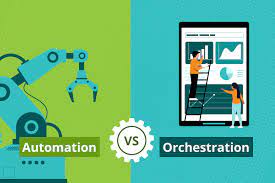 When people talk about Artificial Intelligence (AI) today, they’re usually talking about replacing journalists, artists, and other office workers with software that writes, draws, or codes.
When people talk about Artificial Intelligence (AI) today, they’re usually talking about replacing journalists, artists, and other office workers with software that writes, draws, or codes.
It makes for scary headlines and huge profits on Wall Street.
But that’s not where the money is. Not now. I predict Generative AI will enter a “slough of disappointment” this year once such efforts fail to pay off.
That doesn’t mean there isn’t something important going on. There is. But it relates more to what I’ve been writing about since 2019, the Machine Internet and the Intranet of Systems.
Where AI Pays
 Let’s start with Palantir, which was launched to integrate military data and is now seeking commercial markets.
Let’s start with Palantir, which was launched to integrate military data and is now seeking commercial markets.
Palantir is already getting 10% of its revenue from a hospital scheduling application. It anticipates demand and brings staff to the hospital when they are needed. Any large employer can use a similar system. Cops can use it to anticipate patterns of crime and get resources to where they should be. So can electric utilities, Internet service providers and energy companies.
This software works out of sight, in what’s called the “orchestration layer.” Orchestration lives between the decision-making part of software and the services an organization provides. It’s an important form of middleware.

Orchestration thus is not just about getting people to work. It’s managing the machines they use so the system works when it’s needed. Software can do this better than people, and AI can improve it, by anticipating needs.
Everything is a System

But so is every factory. So is every utility, every regional traffic network every schools and universities.
So are you.
There are opportunities here in software that anticipates needs. But there are bigger opportunities in bringing machine data to that software. I’m talking here about clients. Every meter in your house is a client, and you may have seen calls to automate your home with new, intelligent hardware. You ignored the call because the software didn’t tell you anything you didn’t already know.
AI changes that. It can tell a utility where its leaks are if clients are monitoring them. AI software could lead a doctor to call you, when your FitBit detects patterns that need a health check. It’s already telling Amazon where to put goods in anticipation of demand. It can issue alerts on supply chain disruptions as they occur.
Adding intelligence to the systems we use every day doesn’t take away jobs. AI software can manage more connections between more devices, at a more granular level, than any human ever could. Making that happen will provide real productivity. Trying to write the next Moby Dick won’t.










